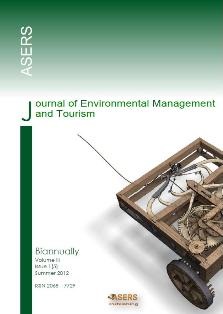ANALYSIS OF THE RELATIONSHIP BETWEEN THE VARIABLES IN JAPANESE TOURISTS DEMAND USING VECM AND COINTEGRATION. THE CASE OF THAILAND
ANALYSIS OF THE RELATIONSHIP BETWEEN THE VARIABLES IN JAPANESE TOURISTS DEMAND USING VECM AND COINTEGRATION. THE CASE OF THAILAND
Author(s): Bunnag TanattrinSubject(s): Economy, Tourism
Published by: ASERS Publishing
Keywords: tourism; VECM; Cointegration; income elasticity of demand; own price elasticity of demand;
Summary/Abstract: The study of this article had done to Japanese tourists which were one of the majority international tourist arrivals to Thailand and used quarterly data since 1985 to 2012. The purpose was to study the relationship between 4 factors including number of Japanese arrivals to Thailand, GDP per capita of Japanese tourists, the own price and the cross price. It was multivariate analysis which investigated dependence and interaction among a set of variables in multi-values process. The tool use was VECM and Cointegration. We could conclude the relationship in the short run of various variables in Japanese tourists demand model. It produced relationship called the income elasticity of demand and the own price elasticity of demand which was equal to 3.281 and -0.505, respectively.In addition, percentage change of GDP per capita of Japanese tourists had a negative relationship with percentage change of the own price. Finally, percentage change of the cross price had a positive relationship with percentage change of the own price. In the long run, the number of Japanese tourist arrivals had a positive relationship with the GDP per capita of Japanese tourists and the own price also had a positive relationship with the cross price.
Journal: Journal of Environmental Management and Tourism (JEMT)
- Issue Year: V/2014
- Issue No: 02 (10)
- Page Range: 114-126
- Page Count: 13
- Language: English
- Content File-PDF

